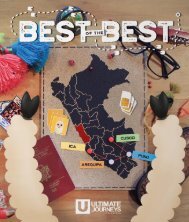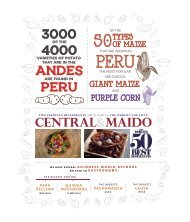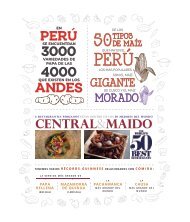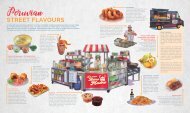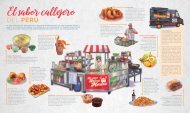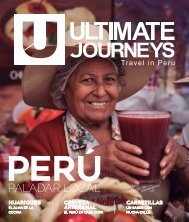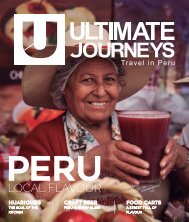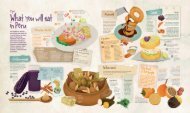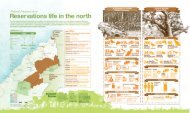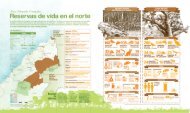UJ #9 - Adventure in Peru
Create successful ePaper yourself
Turn your PDF publications into a flip-book with our unique Google optimized e-Paper software.
INTERVIEW<br />
Giancarlo<br />
Marcone<br />
Director of the Qhapaq Ñan programme<br />
By<br />
Rodrigo Cabrera<br />
Photos<br />
Programa Qhapaq Ñan<br />
Sede Nacional del<br />
M<strong>in</strong>isterio de Cultura<br />
THE QHAPAQ ÑAN PROGRAMME STARTED IN 2001 AND WAS THE RESPONSIBILITY<br />
OF WHAT IS NOW THE MINISTRY OF CULTURE. MOST OF THE WORK THAT WENT<br />
INTO THIS PROJECT INVOLVED THE IDENTIFICATION, RESEARCH, RECORDING,<br />
CONSERVATION AND RESTORATION OF THE NETWORK OF INCA ROADS THAT<br />
STILL EXISTS IN PERU. WE TALK TO ARCHAEOLOGIST GIANCARLO MARCONE, THE<br />
CURRENT DIRECTOR OF THE QHAPAQ ÑAN PROGRAMME, ABOUT WHAT IT MEANS<br />
TO MANAGE THIS VAST CULTURAL LEGACY, PART OF PERU'S AND THE WORLD'S<br />
HERITAGE AND AN IMMENSE TOURIST ATTRACTION FOR LOVERS OF TREKKING.<br />
What is the culture m<strong>in</strong>istry’s view of manag<strong>in</strong>g<br />
the Inca roads mak<strong>in</strong>g up Qhapaq<br />
Ñan?<br />
The roads criss-cross the entire country; it keeps us <strong>in</strong><br />
contact with all of <strong>Peru</strong> and, therefore, should be at the service<br />
of the whole country. We’re work<strong>in</strong>g to create a product<br />
that can be used -by the public that is, and <strong>in</strong> the most <strong>in</strong>clusive<br />
way possible. We want a product for everyone who<br />
uses the road. From the orig<strong>in</strong>al users, people who live<br />
near it and use it every day, who should not be disturbed<br />
by tourist use, to adventure tourists and those visitors who<br />
want to walk it just for fun.<br />
How is its tourist use designed?<br />
We want to generate multiple dest<strong>in</strong>ations with different levels<br />
on the route. This is where the concept of a cultural<br />
it<strong>in</strong>erary arises. The road becomes the axis to which tourist<br />
products are attached; the road is not the attraction as<br />
such, but the way <strong>in</strong> which the story is told. For example,<br />
on the Jauja-Pachacamac stretch the strategy is to gather<br />
what this section of the road tells us; <strong>in</strong>itiatives, eco-tourist<br />
museums, cycle routes and so forth already exist. The idea<br />
is that the cultural it<strong>in</strong>erary def<strong>in</strong>ed by the road <strong>in</strong>cludes<br />
different cultural manifestations. This is what the project is<br />
aim<strong>in</strong>g for: reveal<strong>in</strong>g the different voices and stories that<br />
exist along the road.<br />
Christian Declercq




